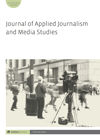
Full text loading...

 , Chandrasekaran Veeraiah2
, Chandrasekaran Veeraiah2
Sociocultural background influences mental disorders in terms of conception, perception, experience of symptoms, recognition and labelling, classification as well as treatment. Malaysia provides a unique context to study the reporting of mental disorders because the concept of mental health is greatly influenced by the multi-ethnic, multi-religious and multi-cultural beliefs of the people in the country. Significantly, media contribute to the framing of mental health problems, with various aspects of the public health issue as well as the stakeholders being depicted differently in the coverage. The current study employed a qualitative content analysis to examine the coverage of mental disorders by Malaysian legacy and online-only newspapers. It was found that the newspapers coverage on mental illnesses could be influenced by their ethnic, cultural or ownership background. The findings also showed that the newspapers reported mental disorders with different prominence and news sources. Mental disorders were most commonly associated with the problems of stress and suicide. Additionally, depression and anxiety were the most frequently reported mental disorders. The individual and societal levels of causal attribution and treatment for mental health conditions were reported, while care/harm was the leading moral evaluation. The practical implications of the findings were discussed with regard to the role of media in promoting mental health literacy, destigmatization and prevention.

Article metrics loading...

Full text loading...
References


Data & Media loading...
Publication Date:
https://doi.org/10.1386/ajms_00131_1 Published content will be available immediately after check-out or when it is released in case of a pre-order. Please make sure to be logged in to see all available purchase options.